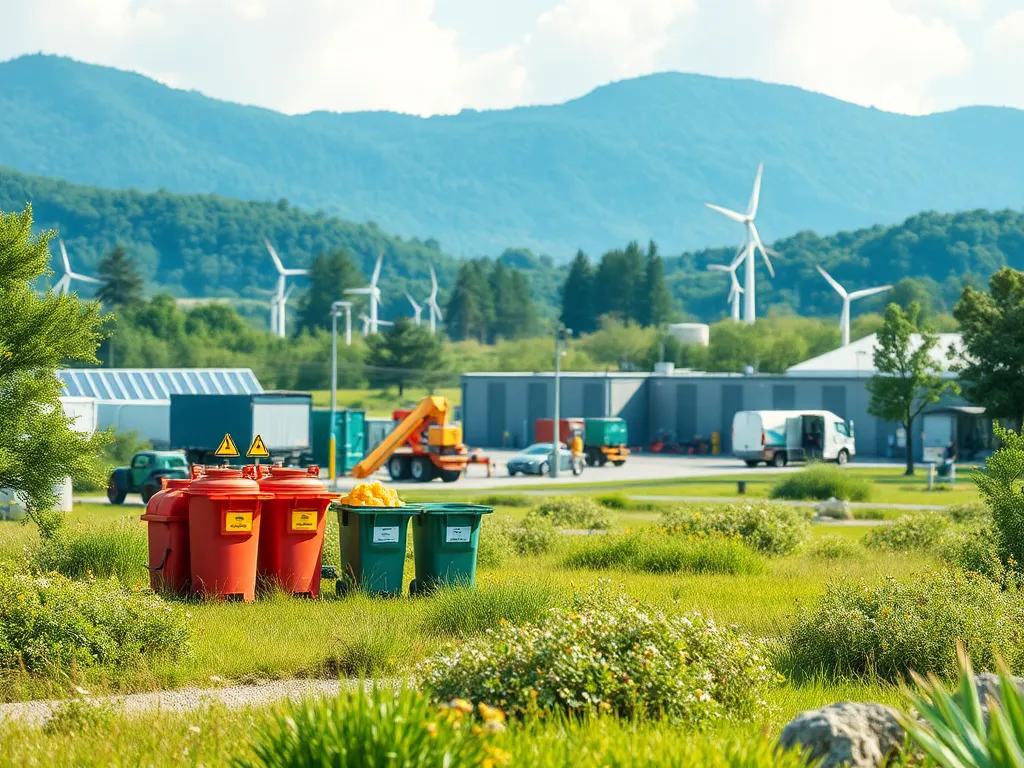Top Strategies for Safe Hazardous Waste Disposal

Safe Hazardous Waste Disposal: A Comprehensive Guide
Safe hazardous waste disposal is crucial for protecting the environment and public health. Hazardous waste materials can pose serious risks if not disposed of properly, contaminating soil, air, and water. This article aims to provide in-depth knowledge on safe hazardous waste disposal practices, highlighting its importance, regulations, methods, best practices, and more.
Understanding safe hazardous waste disposal involves recognizing the types of materials considered hazardous, including chemicals, batteries, and electronic waste. These materials require special handling and processing to mitigate their risk to human health and ecosystems. Responsible disposal practices not only comply with legal requirements but also contribute to sustainable environmental practices.
The safe hazardous waste disposal process often involves various stages—from the initial identification of hazardous materials to their final disposal. It is essential for businesses, individuals, and communities to understand these processes to minimize potential dangers associated with hazardous waste. Implementing safety protocols can prevent accidents and injuries while ensuring compliance with safety regulations.
In light of the growing awareness about environmental pollution, safe hazardous waste disposal has become a priority. Communities are encouraged to adopt better disposal methods and increase public awareness about the importance of correct waste management. It is paramount to consider the health of both current and future generations, emphasizing not just safe disposal but also preventative measures.
The responsibility for safe hazardous waste disposal lies with everyone—from manufacturers and businesses that produce hazardous materials to consumers who may eventually dispose of those items. It is essential to foster a culture of safety and environmental stewardship that prioritizes proper waste disposal practices for the benefit of public health and the environment.
Regulations and Compliance
Hazardous waste regulations are established by various governmental bodies, including the Environmental Protection Agency (EPA) in the United States, to protect public health and the environment. These regulations classify what constitutes hazardous waste and set guidelines for its safe disposal, ensuring that waste management practices adhere to national and international standards.
For effective management of household hazardous waste in Ontario, residents can refer to the guidelines available at https://www.productcare.org/products/hhw/ontario/.
Compliance with hazardous waste regulations is critical in preventing environmental contamination and protecting community health. Businesses are required to keep detailed records of waste generation, treatment, and disposal processes. Failure to comply can lead to serious legal repercussions, including fines and criminal charges.
Unsafe disposal practices can lead to catastrophic consequences, such as environmental pollution, health risks to nearby residents, and costly cleanup efforts. Notable incidents related to hazardous waste disposal demonstrate the severe consequences of neglecting regulations. Such incidents highlight the pressing need for a comprehensive understanding of and adherence to disposal regulations.
Proper documentation is required for hazardous waste management, including manifests that detail the quantity, type, origin, and treatment of hazardous materials. This documentation ensures accountability and traceability throughout the disposal process, reinforcing compliance with regulations and aiding in future audits or inspections.
Disposal Methods
There are various methods for the safe disposal of hazardous waste, including physical and chemical treatment methods. Physical methods may involve solidification, stabilization, or separation of hazardous components, while chemical treatments may neutralize or convert hazardous materials into less harmful substances before disposal.
When it comes to landfilling versus incineration, the choice depends on the type of waste and local regulations. Landfilling, while cost-effective, poses long-term environmental risks if not adequately managed. Incineration, on the other hand, can effectively reduce hazardous waste volume but must be closely monitored to prevent air pollution.
Recycling options for hazardous materials include reclaiming substances from products like batteries and electronics. Companies can often repurpose or recycle hazardous items, reducing overall waste and minimizing landfill impact. This approach not only conserves resources but also promotes a circular economy.
Innovative disposal technologies, such as plasma arc technology and bioremediation, are emerging as effective ways to treat hazardous waste. These methodologies provide alternatives to traditional disposal methods, offering safer and potentially more efficient treatment options to tackle hazardous waste issues.
Best Practices
Employee training on hazardous waste handling is vital for workplace safety. Regular training programs should educate employees about the hazards associated with waste materials and the procedures for safe handling, storage, and disposal, promoting a culture of safety within organizations.
Safety equipment for waste disposal includes protective gear such as gloves, goggles, and masks, which safeguard employees from exposure to hazardous materials. Adopting appropriate safety measures reduces the risk of accidents and health hazards during the disposal process.
Emergency response procedures must be in place in case of spills or accidents. These guidelines include immediate steps to contain hazardous materials, safe evacuation routes for personnel, and the proper reporting protocols to local authorities. An effective emergency response plan can mitigate potential impacts of hazardous waste incidents.
Proper labeling and storage of hazardous wastes are essential for safe disposal. Labels should clearly identify the contents, hazards, and handling requirements. Adequate storage facilities help prevent leaks and spills while ensuring that waste materials are isolated from incompatible substances.
Environmental Impact
Improper hazardous waste disposal can lead to severe environmental consequences, including soil and water contamination, which can harm wildlife and disrupt ecosystems. Long-term exposure to hazardous substances can have devastating effects on biodiversity and local flora and fauna.
Case studies of hazardous waste incidents, such as the Love Canal disaster, highlight the dangers of improper disposal practices. Such historical instances emphasize the importance of strict regulations and safe disposal practices to prevent similar catastrophes from occurring in the future.
Communities play a significant role in hazardous waste management. Initiatives such as local collection events for hazardous materials and educational programs help raise awareness and encourage residents to participate in safe disposal practices, fostering community responsibility.
The long-term effects of hazardous waste on public health can be dire, with increased rates of respiratory illnesses, cancers, and other health issues linked to environmental pollution. Understanding these impacts highlights the critical importance of safe hazardous waste disposal in safeguarding community health.
Hazardous Waste Management Programs
Government and NGO initiatives focused on hazardous waste management provide valuable resources and support to organizations and communities. These programs often promote best practices, offer funding for safe disposal methods, and raise awareness of the importance of hazardous waste management.
Industry-specific disposal guidelines are essential for sectors that produce hazardous waste. Tailored regulations ensure that businesses understand their responsibilities and adopt appropriate disposal measures to mitigate their environmental impact.
Community involvement in waste management fosters a culture of responsibility and awareness. Programs that encourage community members to participate in hazardous waste collection days and educational opportunities strengthen public engagement and promote safer practices.
Educational resources for hazardous waste disposal, including training materials, informational websites, and workshops, play a crucial role in disseminating knowledge. Access to accurate information empowers individuals and organizations to engage in safe disposal practices effectively.
Future Trends
Advancements in waste recycling technology are paving the way for safer and more efficient hazardous waste treatment methods. Innovative approaches can transform hazardous materials into usable resources, diminishing waste and reducing environmental harm.
Policies shaping future disposal methods are focused on promoting sustainability and reducing hazards. Governments are increasingly implementing stricter regulations that prioritize the reduction of hazardous waste at its source and encourage safer disposal methods.
Sustainable practices in hazardous waste management emphasize reducing resource consumption and finding alternatives to hazardous materials. As industries shift toward greener practices, the ultimate goal remains to minimize waste generation and embrace eco-friendly approaches.
The role of innovation in waste treatment is critical for advancing the field of hazardous waste management. Continued research and development of new technologies and methods not only improve safety in waste disposal but also foster a sustainable approach to managing hazardous materials.
